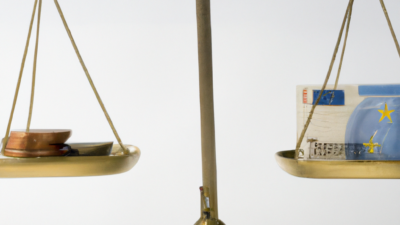**Why Loose Monetary Policy: Navigating Economic Growth and Stability**
In the ever-evolving landscape of global economics, central banks and policymakers frequently face the formidable challenge of steering national economies toward growth and stability. One of the pivotal tools at their disposal is monetary policy, a mechanism through which they control the money supply and interest rates to influence economic activity. Among the various strategies within this framework, loose monetary policy—or the practice of lowering interest rates and increasing money supply—often garners significant attention and debate.
This article delves into the rationale behind adopting loose monetary policy, exploring why central banks might choose to ease financial conditions, the potential benefits such a strategy can provide, and the risks it might entail. By understanding the motivations and implications of these decisions, we can better appreciate the delicate balance central banks must maintain as they strive to foster economic growth, mitigate recessionary pressures, and ensure financial stability. Join us as we unpack the complexities of loose monetary policy and its critical role in shaping the economic landscape.
Sure, here's a content outline for an article on "Why Loose Monetary Policy":
Loose monetary policy, often implemented by central banks, involves reducing interest rates and increasing the money supply to stimulate economic activity. This approach is typically adopted during periods of economic downturns or recessions to encourage borrowing, spending, and investment. Here are some reasons why central banks might opt for a loose monetary policy:
1. **Stimulating Economic Growth**: One of the primary goals of loose monetary policy is to boost economic growth. Lower interest rates make borrowing cheaper for businesses and consumers, encouraging them to take loans for investment and spending. This increased activity can lead to higher production, job creation, and overall economic expansion.
2. **Combating Unemployment**: High unemployment is a significant concern during economic slowdowns. By making credit more accessible, businesses are more likely to invest in new projects and expansion, leading to job creation. As companies hire more workers, the unemployment rate decreases, contributing to a more stable and thriving economy.
3. **Preventing Deflation**: Deflation, or a general decline in prices, can be detrimental to an economy as it tends to reduce consumer spending and business investment. A loose monetary policy can help increase inflation to a healthier level, avoiding the risks associated with falling prices. By ensuring moderate inflation, central banks can maintain price stability and encourage economic activity.
4. **Supporting Financial Markets**: Loose monetary policy can also support financial markets by increasing liquidity. When central banks inject more money into the economy, it can stabilize financial institutions and markets, reducing the risk of financial crises. This, in turn, can restore investor confidence and encourage investment in stocks, bonds, and other assets.
5. **Encouraging Consumer Spending**: Lower interest rates mean lower borrowing costs for consumers, which can lead to increased spending on big-ticket items like homes, cars, and appliances. This uptick in consumer spending can drive demand for goods and services, fostering business growth and economic recovery.
6. **Global Economic Conditions**: Sometimes, loose monetary policy is a response to global economic conditions. For instance, if major trading partners are experiencing economic difficulties, a country might adopt a loose monetary policy to protect its own economy from adverse external shocks. This can include measures to stabilize exchange rates and support export competitiveness.
7. **Managing Public Debt**: In some cases, loose monetary policy can help manage public debt levels. Lower interest rates reduce the cost of servicing government debt, freeing up fiscal resources for other priorities. This can be particularly important for countries with high debt-to-GDP ratios.
While loose monetary policy can be an effective tool for stimulating economic activity, it also comes with risks. Prolonged periods of low interest rates can lead to excessive borrowing and asset bubbles, which may create financial instability in the long run. Additionally, if not managed carefully, it can result in high inflation, eroding purchasing power and savings. Therefore, central banks must carefully balance the benefits and risks when implementing loose monetary policy.













